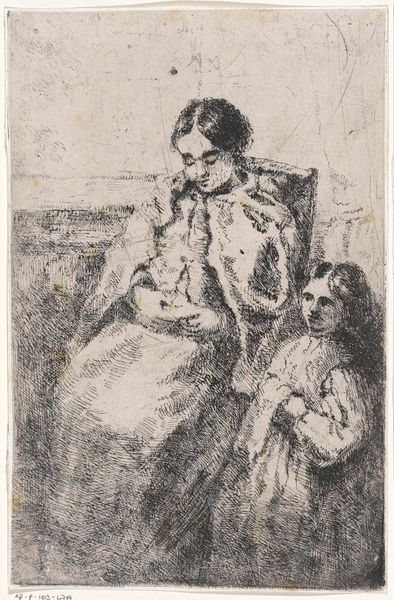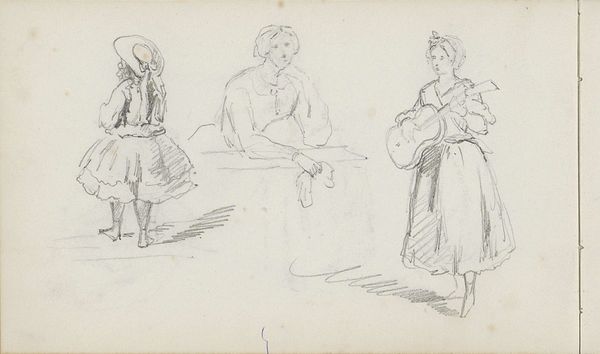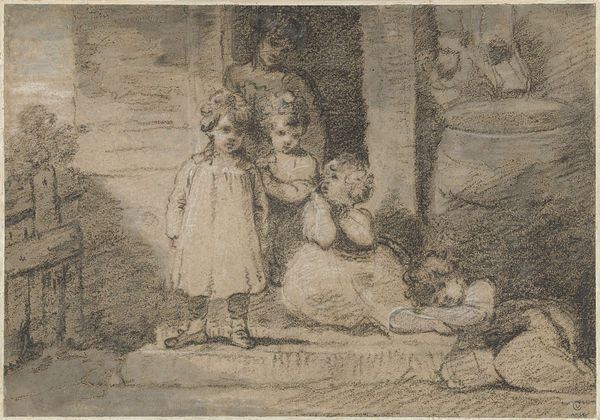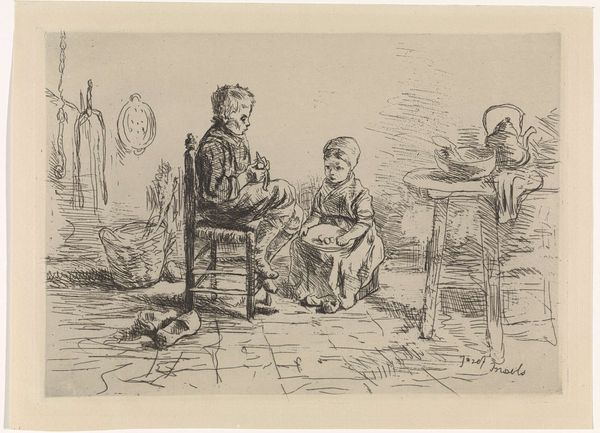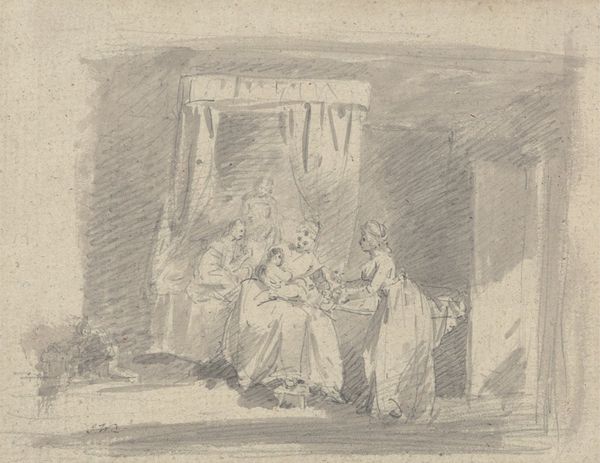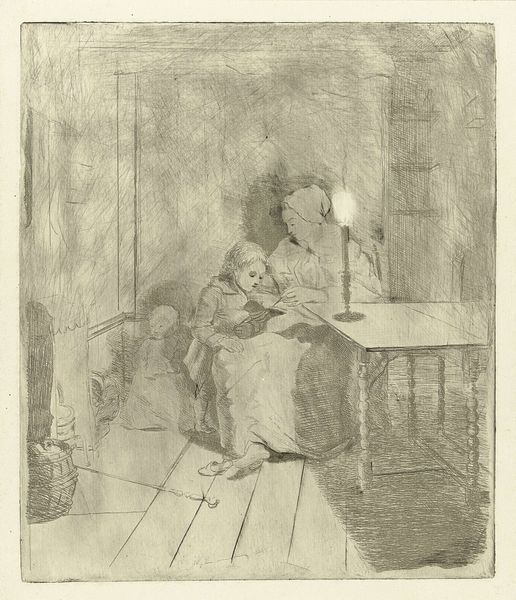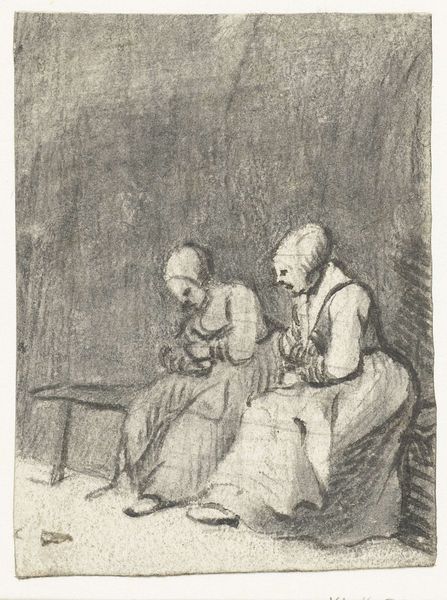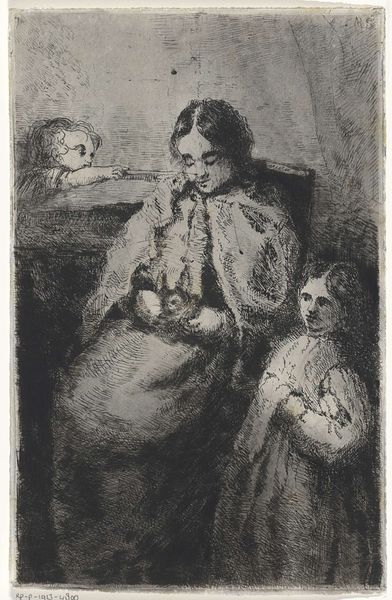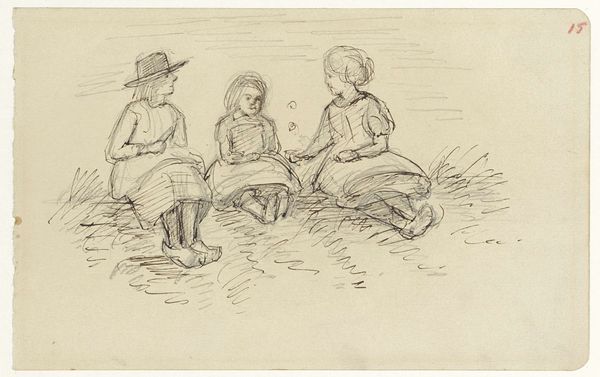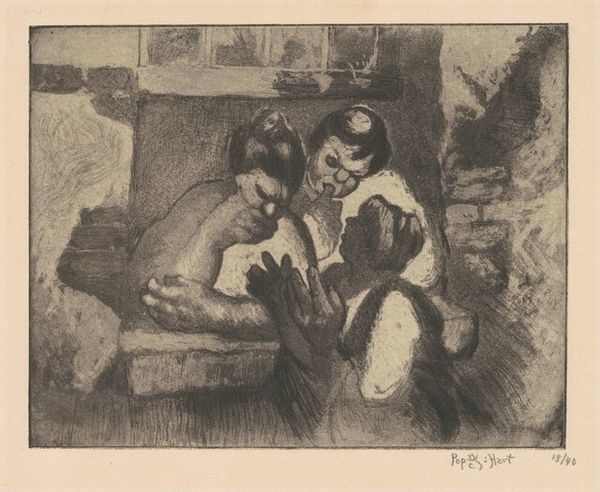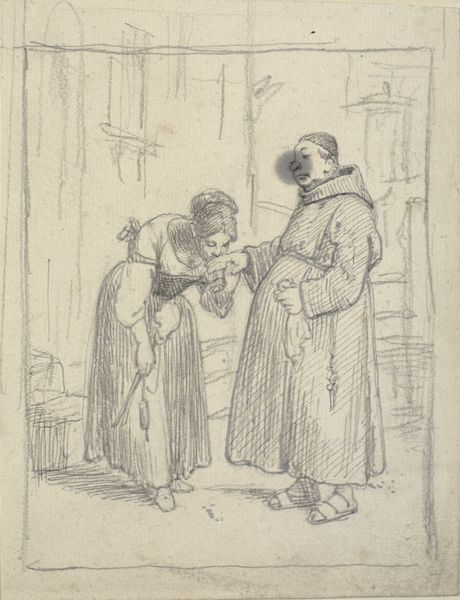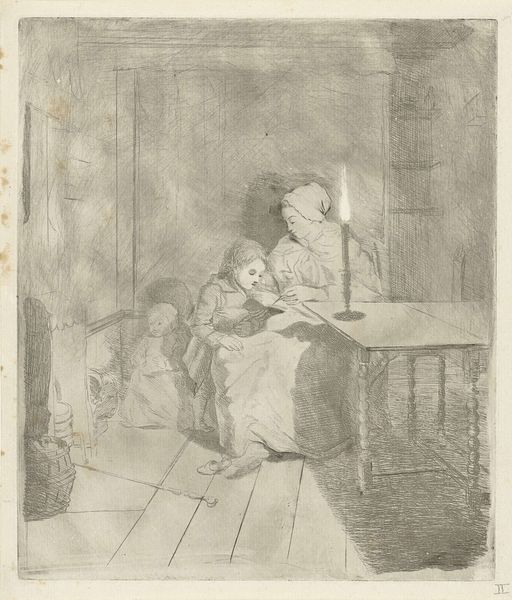
Handwerkende meisje en drie kinderen zittend op een bank met gekruiste armen 1865 - 1913
0:00
0:00
drawing, pencil, charcoal
#
portrait
#
pencil drawn
#
drawing
#
pencil sketch
#
charcoal drawing
#
pencil drawing
#
pencil
#
portrait drawing
#
genre-painting
#
charcoal
Copyright: Rijks Museum: Open Domain
Editor: Here we have a drawing titled "Handwerkende meisje en drie kinderen zittend op een bank met gekruiste armen," made sometime between 1865 and 1913 by Bramine Hubrecht. It’s a pencil and charcoal drawing. What strikes me is the somber mood; the children seem withdrawn. How do you interpret this work? Curator: There is a clear visual narrative here, steeped in symbolic weight. Notice how the seated children, arms crossed, almost mirror each other – a signifier of solidarity or perhaps shared weariness. Consider the lone figure of the girl working; her activity – likely mending or crafting – points towards themes of domestic responsibility and perhaps even economic hardship. Do you see a hint of resignation in her bowed head? Editor: I do, now that you mention it. And there's another face, barely sketched, in the background... what's the meaning? Curator: That spectral presence is fascinating. It could represent memory, perhaps a deceased parent or a sibling, whose absence permeates the scene. The drawing's muted palette adds to this sense of lingering sorrow, embedding layers of emotional depth within a seemingly simple genre scene. This isn’t merely a picture of children; it's a window into the complex emotional landscape of a family facing hardship. Can you see now how seemingly simple depictions carry generational memory? Editor: That’s incredible, I see so much more than I did at first. Thanks for helping me explore it! Curator: My pleasure. It’s a potent reminder that even seemingly mundane scenes are laden with meaning if you only know how to look for it.
Comments
No comments
Be the first to comment and join the conversation on the ultimate creative platform.
